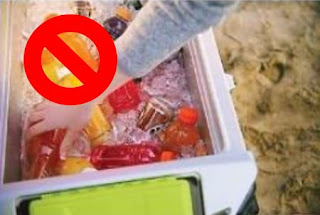Kari Lewis, MSU Extension - Glacier County
This morning I had a sample of the death camas plant come into the office, and our range specialist, Dr. Jeff Mosley has confirmed that this is, “another big year’ for death camas across Montana. Death camas is a toxic rangeland plant that resembles wild onion (and can cause severe illness in humans if mistaken for wild onion). In my producer’s case, they have lost two healthy calves presumably to the death camas, so I wanted to take some time to alert producers to plant.
 |
| The death camas plant is a perennial bulbous native forb in the lily family. Photo by Kari Lewis. |
This morning I had a sample of the death camas plant come into the office, and our range specialist, Dr. Jeff Mosley has confirmed that this is, “another big year’ for death camas across Montana. Death camas is a toxic rangeland plant that resembles wild onion (and can cause severe illness in humans if mistaken for wild onion). In my producer’s case, they have lost two healthy calves presumably to the death camas, so I wanted to take some time to alert producers to plant.
Death camas is a perennial bulbous native forb in the lily
family. Plants have linear grass-like
leaves and the flowers are in panicles with creamy white petals. It does somewhat resemble a shorter version
of Beargrass, which you commonly spot in Glacier National Park.
Death camas is highly toxic to cattle, sheep and
horses. The entire plant is toxic, but
especially the bulb of the plant. When
soil is moist, such as after a rain like we’ve had, the bulb is much easier for
livestock to pull out of the ground and ingest.
Sub-lethal doses of death camas can also decrease animal weight gain, milk
production, and inhibit reproduction.
 |
The death camas bulb resembles wild onion. Photo by Kari Lewis.
|
Death camas greens up early in the season so it is more palatable than other plants. As the death camas matures, it will become less palatable and hopefully livestock will instead prefer grass.
 |
| The death camas flowers are in panicles with creamy white petals. Photo by Kari Lewis. |
If you do have death camas in your pastures, there are a few
recommendations:
- Delay turn-out to those pastures to allow the death camas plant to mature and to allow the grass to grow more. Toxicity is most common if grass is in short supply or there is little residual grass from the previous year.
- Graze death camas pastures lightly. If livestock are short on available forage, they are more likely to consume plants such as death camas. You may consider grazing those pastures very lightly, and then coming back to them later in the season after the death camas has matured and is less palatable.
- In terms of chemical control, 2,4-D can be used early in the growing season before the flowering stalk appears. Likely we are past that control window now, but producers could flag or GPS spots where death camas are so that control can be applied next spring.
If you have plants you believe to be death camas, you can
bring them into your local MSU Extension Office for confirmation.
Additional Resources regarding death camas:



